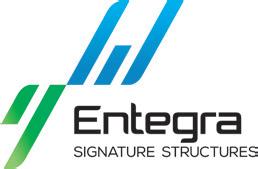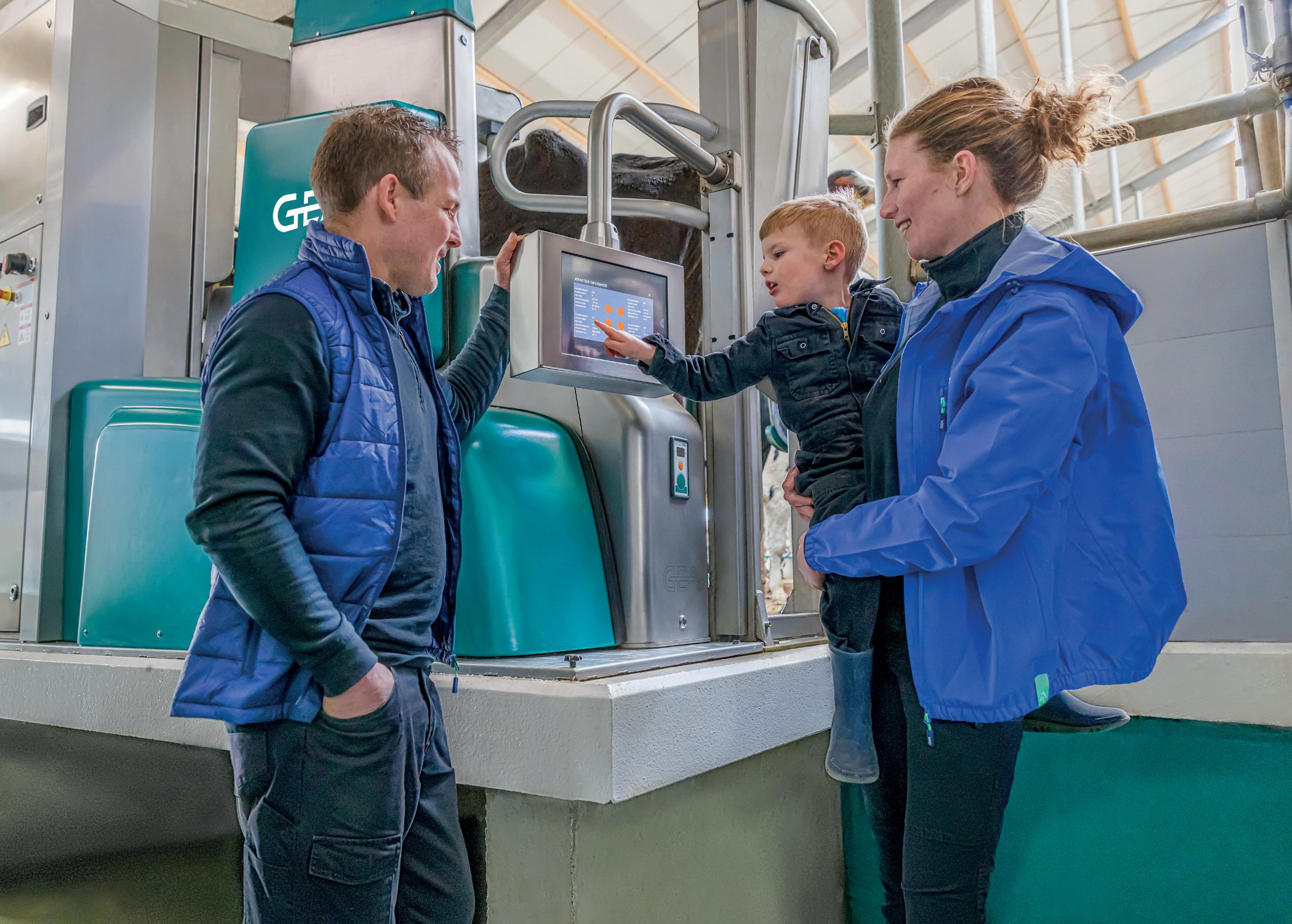GIPPSLAND REGION









PAUL AND Lisa Mumford were thinking about their future and how to make changes so they could continue living on their farm, but step back from day-to-day dairy work.

Their employee, Aaron Thomas, was looking for a new challenge in the dairy industry, but wanted to stay involved in the Won Wron farm.
“We considered a few options,” Paul said. “Do nothing. That wasn’t an option. “Bring in a sharefarmer. That was a possibility.
“Employing a contract manager was another possibility.”
“In all of this, we knew we had to find out what Aaron’s plans were for his future,” Lisa said.
Some frank conversations facilitated by farm consultant, Matt Harms, have led to the trio developing a new structure for running the farm.
It came into effect on July 1 this year.
Aaron’s role has changed from farm employee to contract manager. The process was facilitated by good record keeping on the part of Paul and Lisa, a clearly articulated goal from Aaron, and the assistance of farm management consultant Matt Harms.
“Data is king,” Paul said.
“We use the Farm Monitoring Program to establish benchmarks and monitor historical data.


“That’s how we’ve worked out the agreement between Aaron and ourselves.
“The historical data led our conversations and resulted in this arrangement.”
Matt said the development process took three months from initial idea inception to contract signing.
“It was quite a quick transition to the new structure, because there was so much back story [record keeping], the relationship between Paul, Lisa and Aaron was long standing, and Paul, Lisa and I knew the business quite well,” Matt said.
Aaron has worked for 16 years for Paul and Lisa.
Facilitation over the three months involved
two face-to-face meetings, and a couple of phone conversations between Matt and each other person.
“Paul and Lisa knew what they wanted to do,” Matt said.
Aaron did too.
“It made it seem a simple process, because Paul and Lisa’s business was very familiar to me.
“It could easily be double that time and amount of work in different circumstances.”
Matt developed contracts that prescript the roles and responsibilities of everyone going forward, what the involvement of each party is in the business, and structures around that.
“We were able to build into the new system, the strengths and weaknesses of everyone,” he said.
“Structure is very important. There’s no point someone thinking they have a
level of responsibility in management that they don’t have.
“That would clearly be a mismatch of each parties expectations.”
There are quarterly reviews built into the business model and the contract will be formally reviewed annually.
Paul and Lisa made a decision that means they are able to step back from milking and organising the day-to-day workforce, while still being the owners and ultimately responsible for inputs and outputs.

As contract manager, Aaron is responsible for hiring, managing and paying staff and organising workflow on a daily basis.
In this role, he’s paid a monthly fee, out of which he pays staff wages.
“We all worked out the fee on a production basis,” Paul said.



“We calculated it based on the historical
production data.”
Paul and Lisa decided to manage that output as a monthly payment to Aaron, which provides him with financial stability, paid from the milk cheque.
“Then it’s an easy transaction for profit and loss,” Paul said.
“It’s deducted from the milk cheque every month and paid to Aaron.”



Paul and Lisa wear the risk of any financial fluctuations in the business.
In deciding the contract manager’s financial recompense, Matt spoke to both parties separately.
The resulting annual figure that each party suggested differed by seven cents.
It was seven cents Paul and Lisa were happy to sign over to Aaron.
Continued on page 4
AND SO we find ourselves once again on the right side of the winter solstice, and at the beginning of a new season.
It seemed like a particularly cold and dark run to the shortest day this year, although if I’m honest it’s possible that I say things like that most years, and a year is just long enough for me to be a little forgetful about what’s coming.
Our farm sits at the edge of what used to be a swamp, and it’s showing its true colours this year. This is certainly the wettest we have seen the land in our 13 years here, with new soaks and springs in the most unusual places.
Forecasts remain for an El Niño year, so for now we are hoping for springtime to bring what we’ve missed the past couple of years — sunshine, warmth and the ability to grow and harvest some good quality fodder for our animals to make milk from.


We are fortunate to have another strong milk price this year, although there’s no doubt that overhead and operating costs are rising to meet it.
Record low interest rates, immediate tax deductions and depreciation balances are gone, and for now so has the export heifer market that has provided a ‘13th milk cheque’ for many of us.
I’m sure we’re not the only ones who have been feeling those extra mouths to feed and feet on the paddocks during a wet winter.
I’m a big believer in knowing the numbers and being on top of the books at any time when running a business, but if you’ve let your
financial discipline slip a little over the last few profitable seasons, now is a great time to make the ‘New Financial Year’s Resolution’ to get back on top of it.
It might be an opportunity to get onto computer-based accounting, take courses such as Dairy Business Fundamentals and Dairy Business Analysis, join a benchmarking discussion group, or get a consultant to sit down with you to review your farm and business performance and identify opportunities for improvement.




I have two ‘New Financial Year’s Resolutions’ this year.

The first one is to move from my old computer to the new one that I bought a year ago to replace it. Despite a joyful big screen and faster processor, I keep returning to the familiarity and comfort of old faithful that has served me well for nearly 10 years. Perhaps I’m showing my age in declaring my fear and remembering a time when ‘breaking it’ was all too easy!
The second resolution is to make sure I collect the physical information I need each month to calculate a Carbon Emissions Intensity for our business at the end of the year.


Carbon science and markets are frustratingly immature and frequently changing, but it is clear now that we will soon need to ‘know our numbers’. Whether we like it or not, our bank and trading partners will be asking for it.
The financial records from a season are not too hard to find, but I have found over many years of benchmarking that the physical
information (such as stock numbers and locations, feed and fertiliser tonnes) is easily lost. If I can collect the right information now, it will mean I am prepared for whatever comes at us. I wish you all well for the season ahead — may it bring a sunny springtime, a bountiful harvest and a lovely flow of milk. Focus on the things you can control, know your business, and it will help you be ready for the opportunities that arise as the seasons and markets change around us.
Lauren Finger GippsDairy chair

 BY JEANETTE SEVERS
BY JEANETTE SEVERS
AN AGRICULTURAL water audit is being funded as part of a project to help identify agricultural and economic opportunities in the Orbost district in southern Victoria.
The project is part of a response by the Victorian Government to close the state’s forestry industry.
In late March, when tabling the state budget, the government announced the forestry industry closure was brought forward from 2030 to 2024.
Funded through the Victorian Government’s Community Development Fund in 2020, Orbost is one of 11 priority Local Development Strategy communities.
Project manager Tim Cotter was employed to work with the Orbost community to identify the district’s strengths and future opportunities.
The project’s purpose is to identify employment and economic development opportunities outside of forestry.

Agriculture and forestry combined is one of the identified three main sectors — the others are education and health — that provide employment and economic activity and opportunities in the Orbost district.
Subsequently, a working group of industry, government, community and academia representatives has prioritised water for agriculture as a primary focus and interest.
The Snowy River flows through the district, and the river flats are principally used for dairy and beef farming and some maize production.
The lower Snowy River is saline and the reach between Marlo and Orbost regularly inundates farmland with water.
A series of workshops has begun looking at what other agricultural endeavours could be undertaken on the agricultural land in the Orbost district.


“The workshop sessions would develop scenarios for the future development of the flats, the kinds of resources that would enhance the likelihood of successful innovation and the barriers which would need to be addressed,” Mr Cotter said.
The peaks and troughs of water availability for farming in the district is an identified challenge.
An initial water audit was undertaken, identifying two sources of water for irrigation in the district — surface water from the Snowy River and groundwater extracted from the Orbost groundwater management system.
The study identified 52 licences for water extraction from the Snowy River, with a total licences volume of 3763 megalitres.
During 2015-20, the maximum volume extracted was 1434 Ml, at an average 900 Ml/year.
A similar pattern was identified with groundwater usage. There are four licences, with a maximum licensed volume of 1217 Ml.
The highest extraction volume of 545 Ml was in 2018-19 (a period of severe drought). There has been an average of 288 Ml extracted over the five-year period.
“What these figures tell us is that during the five-year period, in some seasons, sufficient rainfall may have meant the expenses of pumping water for irrigation was not justified; and in other seasons, not all irrigators used their full allocation,” Mr Cotter said.
A key future focus of the working group is to speak to individual farmers about water usage and create opportunities to improve water literacy.
Mr Cotter will be meeting with local dairy farmers to further discussions about the project, and explore innovation potential within the sector.
“Technology, herd and pasture management, breeding, genetics and value-add opportunities are all potential areas of innovation within the dairy sector in Orbost and district,” he said.

“The 30 [local] dairy farms are perhaps overlooked in terms of their impact on the region’s economy and output.”
Dairy farmers will be asked for their input into an agricultural water audit in the Orbost district.

Continued from page 1
The farm is a gross of 445 dryland hectares, at Won Wron, on a mix of steep and flat country. Paul and Lisa own 235ha and lease the remainder.
The lease blocks enable them to harvest fodder.
“Pasture growth averages 7.5 tonnes of dry matter per hectare,” Paul said.
“We harvest to produce enough silage and hay to feed 1tonne/cow per annum.
“Over the last three years we’ve built up a reserve of one year’s silage and hay.”
The first cut of silage is pit-stored, and any ongoing excess is made into round bales.
Contractors are employed to harvest fodder.
The self-replacing milking herd is 450 registered Jersey cows, under the Gelbeado Park prefix.
“Historically it’s been 400 head, producing 180,000 kg of milk solids,” Paul said.
“But we decided to increase milking numbers this year.
“We’ve always chosen to understock, but the numbers have always indicated 450 is our optimum milking number.”
Between 2016 to 2018, the Mumford’s Won Wron farm was a Focus Farm, and Paul credits that participation as a key factor in the growth of their business.
“Being a focus farm was the best thing for our business,” he said.
“We were a Focus Farm when we and the district were deep in drought. We were in financial distress.
“We had to lay everything on the table, for others to peruse and comment about.”
The couple owned two dairy farms at the time. Ultimately, being a Focus Farm caused them to reduce their holdings to one farm.
“We were trying to keep both farms afloat, to the detriment of this one,” Lisa said.
“Being a Focus Farm taught me to get your farming system right for the farm you own,” Paul said.
“This farm was subsidising the other farm. Labour was also an issue.”
The Won Wron farm is spring calving, and was being used to winter-graze the other herd when the second farm got too wet. That wasn’t helping with fodder management either.
A 50-stand rotary dairy plant was installed in December 2002, and renovated 18 months ago as part of Paul’s intention to step back from milking.
All cows wear collars to manage feeding, health and fertility.
The dairy includes auto-drafting and automatic cup removers.
“It’s now a one-person dairy,” he said.
“Before the renovations, we always needed to be two labour units in the dairy.”
Although the milking herd is entirely registered stud cows, Paul principally breeds for production.

“This season we produced 2.2 million litres of milk.”
He will continue to focus on breeding the best Jersey genetics.
The herd is joined in a nine-week period using artificial insemination.
An empty cow will be carried through for one joining period, so long as she maintains her productivity.
While the historical production numbers indicate a 2.4 labour units, Paul and Lisa have always employed above this number.
As well as themselves, they employed three equivalent full-time labour units including Aaron.
Aaron has been with them for 16 years, beginning as a farm labourer, then progressing in his career and participating in dairy and farming courses.
“The numbers say we should employ 2.4 labour units, but we have a group of employees who work well together,” Paul said.
“So we’re prepared to pay to keep them.”
As well as the additional EFT labour, the couple pay above-award rates and offer flexible workplace conditions.
They also ensure an atmosphere at team meetings where everyone can contribute. Roles and responsibilities are allocated across the team.
“We identify who has an aptitude for certain tasks and responsibilities,” Paul said.
“Some people like to feed out, some like to milk, others are interested in animal health.”
Under the new arrangement, where Aaron is employed as a contract manager, he takes over the financial responsibility and management of labour.
Paul and Lisa, as owners, are financially responsible for all other inputs to the farm and managing the farm.
“The new system is going to challenge us, but we can now choose what jobs we want to do on the farm,” Paul said.
“We also have opportunities to do other things outside of farming.
“And the new structure gives Aaron the opportunity to achieve more.”
Establishing gut health and development in calves is essential for building a foundation of performance and profitability in the future herd. ACTIGEN focuses on supporting animal performance by promoting good bacteria, building defences and maximising growth and efficiency.

 Herd production stepped up to 2.2 million litres of milk in 2022-23.
Herd production stepped up to 2.2 million litres of milk in 2022-23.










Wednesday
































Is the grass greener on the other side or does dairy offer a longterm financial reward that compensates for the hard work and volatility?





Join Facilitator Matt Harms, from ONFARM Consulting and panel members Mark and Trish Hammond (Labertouche dairy farmers), David Linda Brumby (recent entrants to dairy farming at Leongatha), Luke Wallace (Poowong North dairy farmer with recently installed robots), Nick Leppin (Wattlebank) and Matt Colwill (Nerrena) (both former dairy farmers), to discuss whether dairy farming is improving with age or is it on the nose? Come along and listen to a passionate range of views and experiences, to really determine whether dairy farming is improving with age.
































Why Gippsland is Australia’s premier dairy region! Panel Discussion, Jersey Milky Cocktails, Beverages & Snacks by Matty Wilson.






Date: 3pm Wednesday 6th (Football Clubrooms)




Tickets: $30 members, $50 non-members includes Expo entry from 10am Booking: https://diaa.asn.au/events







•Australian Family owned business


•Trusted Performance since 1984
•The bank with the heart of a farmer
•Proud supporters of Gippsland’s thriving dairy industry
•Our tractor and machinery offerings represent a class-leading product range

•Visit our website www.afm3820.com.au










•Specialists in biological soil and plant health programs that assists you in improving your soil, pastures and animal performance while reducing reliance on synthetic fertilisers such as Urea and Super


•The most versatile sprayer in the world
•Apply all your fertiliser in one pass
•Premium milk replacer supplier using Australian ingredients
•One-stop calf rearing shop and support service
•Supporting profitable and sustainable dairy farming
•Visit our website www.gippsdairy.com.au



•A leading dairy processor in Australia




•High quality dairy products for domestic & international markets
•Milk Safely, Gently, Quickly and Completely with GEA
•Take the Next Step with GEA
•Your farm deserves Australia’s leading dairy automation systems proudly backed by the team who designs and builds it

•20 Years of great products and exceptional service

•Increase the herd milk production with an Entegra Shelter or Ridgeback™ barn

•Site specific engineering to optimise the design performance
•ProDairy; we’ve got you covered
•Designed for Dairy Farmers, Delivered by Dairy Vets








•Fuels, Lubricants & Ad Blue
•Farm, industrial & retail

•Locally owned and operated
•www.evanspetroleum.com.au

•Renewable Energy as a Service (REaaS) provider





















































•Embrace Clean, Green Energy with REDEI - No Upfront Investment Required!






•Locally Designed & Manufactured Systems operating at 5 Gippsland Dairies and Counting!

THE STRZELECKI Lions Club will host the South Gippsland Dairy & Farming Expo in Korumburra on Wednesday and Thursday, September 6 and 7.
This year the club will celebrate more than 22 years of showcasing the latest innovations, products and services available to the dairy industry.
The funds raised from the expo have helped the club distribute more than $640,000 back into the community and Lions projects.
A highlight of the event is the chance to win some of the $5000 prize pool in the Udder Truth Show Bag competition.
Participants must be farmers and over 18 years of age. Collect a show bag at the gate, answer 17 of the 20 questions and request
your card to be stamped by the corresponding exhibitor.
The first card drawn at 2.30pm on Thursday, with 17 correct answers and the exhibitor stamps, will win the $3000 first prize. Second prize is $1500 and third prize is $500.
Matt Harms from OnFarm Consulting will host a session on Wednesday at 11am. Is dairying like a good bottle of red wine? Does it get better with age, or is it corked? Is the grass greener on the other side or does dairy offer a long-term financial reward that compensates for the hard work and volatility?

Joining Matt will be panel members Mark and Trish Hammond (Labertouche dairy farmers), David and Linda Brumby (recent entrants to dairy farming at Leongatha),
Major sponsor: Westpac.
Platinum sponsor: Reid Stockfeeds.
Gold sponsors: Rabobank, Saputo
Dairy Australia, Redei, ProDairy, Evans
Petroleum, GEA Farm Technologies
Australia Pty Ltd, Ag Farm Machinery
Warragul, Green Mate Agriculture, Easy
Dairy Automation Systems, ProviCo Rural, Tow and Fert by Metalform, Entegra and GippsDairy.
Silver sponsors and media partners: Ross Chapman Cartage & Earthmoving Contractors, Poowong Dairy & Hardware, Dairy News Australia and The Warragul
Gazette and Sentinel-Times.
Udder Truth Show Bag competition: Brought to you by South East Organic Fertiliser. Participating companies: Easy Dairy Automation Systems, Rural Financial Counselling Service Gippsland, Pioneer

To learn how to feed smarter, contact your local Ridley team of Dairy specialists or visit us at the South Gippsland Dairy Expo on September 6 & 7 to talk with one of our dairy experts:
Luke Wallace (Poowong North dairy farmer with recently installed robots), Nick Leppin (Wattlebank former dairy farmer) and Matt Colwill (Nerrena former dairy farmer) to discuss whether dairy farming is improving with age or is it on the nose. South Gippsland Shire Council sponsors this session.
Don’t miss the Gumboot Gift on Thursday at 1pm. The prestigious 120-metre gumboot footrace has both male and female sections, with a prize pool of $4000.
And bring the kids along to Airy Fairy Fun & Faces, sponsored by Poowong Dairy & Hardware.
The South Gippsland Dairy & Farming Expo will be held on Wednesday and Thursday, September 6 and 7, from 10am to 3pm, at
Seeds, Reid Stockfeeds, MaxCare, Redei, Lely Center Gippsland, Ridley, Notman Pasture Seeds, ProviCo Rural, Browns Fertiliser, CLAAS Harvest Centre Warragul & Leongatha, Greenmate Agriculture, Hickseeds, Allflex Livestock Intelligence, East Coast Generators, Achmea Farm Insurance, Entegra Signature Structures, Reeve Pumps and Irrigators and Travel Managers. Gumboot Gift sponsors: Lardner Cattle
The South Gippsland Dairy & Farming Expo returns to Korumburra next month.

Korumburra Showgrounds, Korumburra. Cost is $15 per person, with free admission for children aged under 16. For more information for exhibitors or patrons, phone Deanne Kennedy on 0419 878 055 or email dairyexpo@jaydee.net.au
Sales, Korumburra Plumbers & Pumps, Jefferis Livestock Transport Pty Ltd, Walker Electrical, Countrywide Clothing, Burra Barber, Levey Engineering, Farm Depot, Ag-Crete Industries, Nacas Truck N’Ag, T & G Mechanical, Devan Hance-Agricultural Engineering, Carringtons Loch, JJ Waste & Recycling, Lectaire Auto Electrics & Air Conditioning, South Gippsland Hire and T for Tyres, Korumburra.
Male & Female Sections - Thursday 7th September at 1pm




• The gumboot gift is a 120 metre foot race wearing gumboots that will be held on Thursday 7th September 2023 at 1 pm


• The prize pool is $4,000 - Male & Female Categories


















• There is no entry fee, participants will just need to turn up with an ‘I can win’ attitude.








Participants must:




• Arrive at the checkpoint in front of the amenities complex to receive their race number at 12.30 pm sharp
• Provide and wear standard knee length gumboots with no modifications




























• Provide their age upon registration; handicaps will apply
• Complete the race registration form prior to racing either online or at the racing checkpoint on the day. Registration forms can be found at www.dairyexpo.org.au
• Be over 18 years of age to enter the race.
• The Udder Truth Show Bag is a competition where one lucky farmer can become significantly richer
• First Prize $3,000, Second Prize $1,500, Third Prize $500

• There is no entry fee, participants will just need to turn up and collect a show bag at the gate.
• Answer 17 out of the 20 questions and request your card to be stamped to go in the draw for the $5,000 cash prize pool

• Place completed cards in the designated ‘entry box’ which can be found at any of the Dairy & Farming Expo gates
• The first three cards drawn with 17 correct answers and stamps from the corresponding companies will win $3,000, $1,500, $500 respectively
• Participants must be farmers and over 18 years of age to enter





• The prize will be drawn at 2.30 pm on Thursday 7th September 2023
• Registration information will be used for ‘competition purposes only’ and will be destroyed after the draw
• You do not need to be present at the Dairy & Farming Expo to win the prize money!

Ag Moto will represent CFMOTO at the South Gippsland Dairy & Farming Expo in Korumburra on Wednesday and Thursday, September 6 and 7.
Ag Moto is a new flagship CFMOTO dealer servicing the Gippsland market from its base in the Southeast Business Park of Pakenham.
In Australia, CFMOTO is a well-established and market-leading brand in the off-road and agricultural segments.
CFMOTO Australia’s technical department has worked closely with Australian farmers, the dealership network and CFMOTO’s global engineering team to rigorously test and continuously develop the product range to suit local needs.
The highly-acclaimed CFORCE ATV range has grown to eight models, including the new benchmark-setting 400s and 520 models.
These models bear all the hallmarks of CFMOTO's experience, ingenuity, craftsmanship and attention to detail. Stronger and lighter, and ranging from 400cc to 1000cc, there is a CFORCE to meet every need.
The UFORCE UTV range, which has undergone a recent growth spurt, now spans 10 real-world work-ready models.
The value-packed line-up starts with the all-inclusive attributes of the new UFORCE 600 range to the more powerful 800s and book-ended by the fearless UFORCE 1000s.
DAIRY FARMERS were out in droves for the open day of a 16-bay robotic dairy — otherwise now known as a volunteer milking system, or VMS — on Wednesday, July 12.


The open day was held on the dairy farm of Alister and Katie Clyne, at Tinamba, in Gippsland’s Macalister Irrigation District.
The new DeLaval system, which began operating the week following the open day, includes three compressors, a stabilised power supply,
Built for work, there are four different variants in the UFORCE 600 range, including a base model, an EPS model, a HUNT edition, and the range-topping all-weather UFORCE 600 TREK Edition.
The more powerful UFORCE 800 EPS range is the pick of the bunch when it comes to versatility, perfect for work and play. Loaded with standard equipment and plenty of V-Twin performance, it can turn a workday into a fun day.
The flagship UFORCE 1000 range has been built on an all-new platform that has completely revolutionised the game and taken UTVs to the next level. Four variants are available, including the upsized six-seater XL and the weather-beating TREK.

GippsDairy are currently seeking two farmers to fill Farmer Director positions on the GippsDairy Board.
All dairy farmers who are passionate about helping promote a vibrant and sustainable dairy industry are encouraged to apply.
Directors of GippsDairy can expect to commit up to 12 days per annum, comprising; six Board meetings, teleconferences, annual general meeting, a strategic planning day, sub-committee meetings and industry events as appropriate.
Applications need to be submitted by email or post by Friday 25 August and shortlisted applicants will be interviewed in mid-September.
For more information and to request an application form, please contact Sallie Clynes at sallie@gippsdairy.com.au or 03 5624 3900 gippsdairy.com.au

Wednesday 6 and Thursday 7 September
Chat to the GippsDairy Team at site 18 about dairy workforce, sustainability and try out our VR headsets used to promote careers in dairy at schools. dairyexpo.org.au
The CFMOTO range will be on show at the South Gippsland Dairy & Farming Expo. Matt Daly of Tinamba and Tim Dwyer of Newry are milking from herringbone dairies and were interested in the new setup on the Clynes’ farm at Tinamba.solar panels, automated detergent dispensing system and automated flood wash, and an overhead gantry way for maintenance, among other innovations.
The purpose-built shed comfortably houses 16 milking bays, an automated feeding system, and a new staff area and office.
The dairy platform itself will be in use 24 hours a day, with one person on call to deal with any alerts from the system.

Hundreds of dairy farmers from across Victoria attended the open day to see the new dairy, hear about the technology, and talk about the industry.







Next generation farming creates a maximum of flexibility for you, strengthens cow welfare and fosters sustainability. Our portfolio encompasses integrated solutions for efficient and sustainable high-quality milk production and livestock farming.

Automatic Milking Systems
Conventional Milking Systems
Feeding Systems



Manure Management
Herd Management